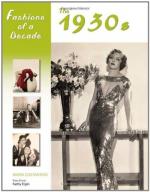|
This section contains 114 words (approx. 1 page at 300 words per page) |

|
In Congress the results were equally one-sided. In the new House of Representatives there would be 331 Democrats and only 89 Republicans (with 13 other seats going to Farmer-Laborites, Progressives, and Socialists). The numbers in the Senate were equally astounding: 76 Democrats and only 16 Republicans (with 4 Farmer-Laborites).
Sources:
Kristi Andersen, The Creation of a Democratic Majority, 1928—1936 (Chicago: University of Chicago Press, 1979);
Harold F. Gosnell, Champion Campaigner: Franklin Roosevelt (New York: Macmillan, 1952);
William E. Leuchtenburg, "Election of 1936," in History of American Presidential Elections 1789-1968, edited by Arthur M. Schlesinger Jr., volume 3 (New York: Chelsea House/McGraw-Hill, 1971), pp. 2809-2913;
Samuel Lubell, The Future of American Politics, third edition, revised (New York: Harper & Row, 1965).
|
This section contains 114 words (approx. 1 page at 300 words per page) |

|




